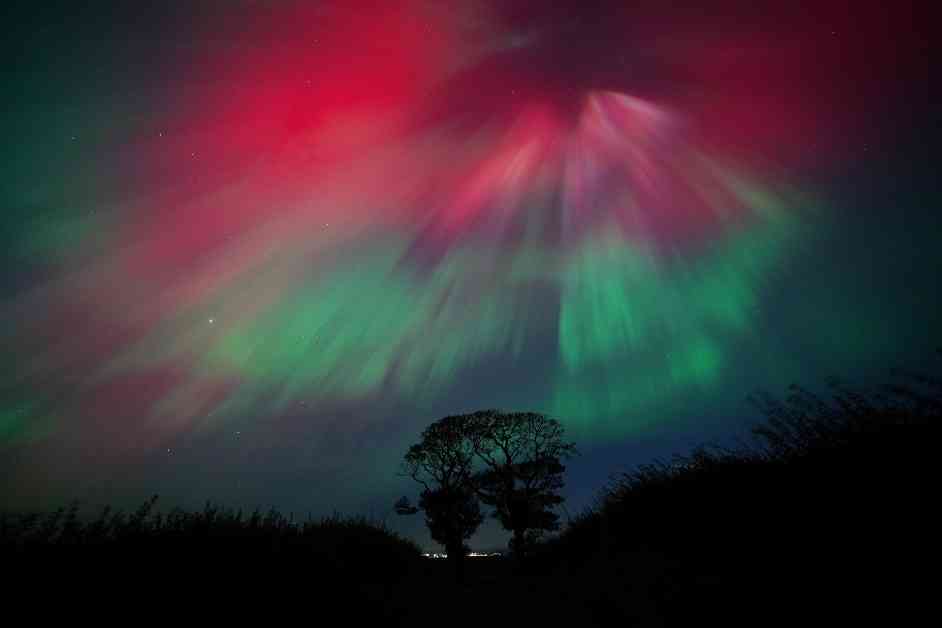The Northern Lights, also known as aurora borealis, painted the Scottish skies with stunning pink hues on Thursday evening and Friday morning. Photos capturing this dazzling natural phenomenon flooded social media, showcasing the beauty of the auroras across Scotland.
According to the Met Office, the relatively clear skies forecasted for much of the UK provided a decent chance of visibility for the Northern Lights. The increased frequency of space weather events in recent months, including the auroras, can be attributed to the sun nearing the peak of its solar cycle.
Stephen Dixon, a spokesman for the Met Office, mentioned the possibility of visible auroras across parts of the UK on Thursday night and into the early hours of Friday. The auroras, typically seen over high polar latitudes but occasionally spreading southward, are primarily influenced by geomagnetic storms originating from solar activity.
The sun operates on an approximately 11-year cycle known as the solar cycle, with peak sunspot activity referred to as solar maximum. Sunspots have the potential to release large bursts of energy, called coronal mass ejections, towards Earth, leading to visible auroras like the recent display over Scotland.
Aurora displays occur when charged particles from the sun collide with gases in the Earth’s atmosphere near the magnetic poles. These collisions emit light at various wavelengths, resulting in the vibrant and colorful displays that grace the night sky during Northern Lights events.
The ethereal beauty of the Northern Lights serves as a reminder of the intricate relationship between the sun, Earth’s magnetic field, and the atmosphere. As spectators marvel at the celestial show painted across the heavens, they are witnessing a dance of light and energy that transcends geographical boundaries and captivates hearts and minds around the world.
































